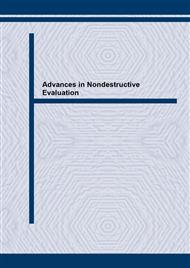[1]
ASTM E647-99: Standard test method for measurement of fatigue crack growth rates, Annual book of ASTM standards, Philadelphia, American Society for Testing and materials (1999), pp.591-630.
Google Scholar
[2]
Elber, W.: The significance of fatigue crack closure, Damage tolerance in aircraft structures, ASTM STP 486, Philadelphia: American Society for Testing and Materials (1971), pp.230-242.
DOI: 10.1520/stp26680s
Google Scholar
[3]
Jones, R.E.: Fatigue crack growth retardation after single-cycle peak overload in Ti-6AL-4V titanium alloy, Engng. Fract. Mech., Vol. 5 (1973), pp.585-604.
DOI: 10.1016/0013-7944(73)90042-8
Google Scholar
[4]
Kim K.S. and Shim C.S.: A study on the measurement of elastic-plastic zone at the crack tip under cyclic loading using ESPI system, Journal of Ocean Engineering and Technology, Vol. 16, No 4 (2002), pp.13-18. (in Korean).
DOI: 10.12989/sem.2003.15.3.367
Google Scholar
[5]
Wheeler O. E.: Spectrum loading and crack growth, J. Bas. Engng., Trans ASME, Vol. 94 (1972), pp.181-186.
Google Scholar
[6]
Kim K.S., Kim K.S., Shim C.S. and Cho H.M.: A study on evaluation of overload effects on fatigue crack growth, FEOFS (2003), to be published. Title of Publication (to be inserted by the publisher)
Google Scholar
[7]
Kim, K.S., Kim, K.S., Shim, C.S.: A study on the measurement of plastic zone and crack growth length at the crack tip under cyclic loading using ESPI system, Structural Engineering and Mechanics, 2003, Vol. 15, No. 3, pp.367-378.
DOI: 10.12989/sem.2003.15.3.367
Google Scholar


